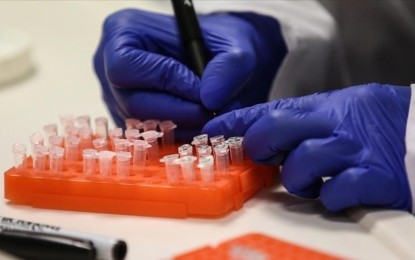
(Anadolu photo)
MANILA – The Department of Health (DOH) has asked the World Health Organization (WHO) for 2,000 vaccine doses that could help the Philippines battle the growing threat of mpox.
In an interview with Teleradyo Serbisyo’s Iwas Sakit, Iwas Gastos, Secretary Ted Herbosa clarified, however, that the DOH is not asking for immediate distribution since there are countries that need them more.
“Nanghingi na ako (I already asked). I have about 2,000 doses coming from our share sa ASEAN (Association of Southeast Asian Nations), sa WHO and may proseso iyan (there is a process),” Herbosa said.
He was referring to the cowpox vaccine that is being used against the small pox virus, also used for mpox in other countries.
Herbosa, who attended a hybrid-format WHO briefing on the global mpox situation on Friday, said the Philippines would let the vaccines be distributed first in Africa, where MPXV clade I, which is more likely to cause severe illness and death, has been observed.
“Hindi ako nakikipag-agawan kasi alam ko mas kailangan nila sa Africa (I am not demanding because I know Africa needs it more). ‘Yun yung (That’s the) discussion last night,” Herbosa said.
“‘Yung bakuna na kaunti lang, ibubuhos muna natin sa Africa sapagkat kailangan ma-contain muna ‘yung outbreak dun (The vaccine is insufficient. We have to give it first to Africa because the outbreak there needs to be contained first),” he added.
Mpox is caused by the MPXV species of the orthopoxvirus genus, first discovered among laboratory primates in Denmark in 1958 and later on first observed in humans in 1970.
There are two major groups of MPXV called clades.
MPXV clade I, the variant causing fatalities, has been observed mainly in the Congo basin (Central Africa), while milder MPXV clade II has been detected in the Philippines.
The Philippines has so far reported a total of 10 cases of mpox since 2023.
An mpox-infected person develops symptoms between two and 19 days after exposure, like rashes and flu-like conditions.
WHO director-general Tedros Adhanom Ghebreyesus on Friday announced the need to fund the Global Mpox Strategic Preparedness and Response Plan (SPRP) that will require at least USD135 million over the next six months “to stop the outbreak as quickly as possible.”
While WHO has already released USD1.5 million from its Contingency Fund for Emergencies, it would continue to release more in the coming days until funding from donors for the response plan comes in, Ghebreyesus said.
The SPRP aims to stop outbreaks of human-to-human transmission of mpox through coordinated global, regional and national efforts. (PNA)
